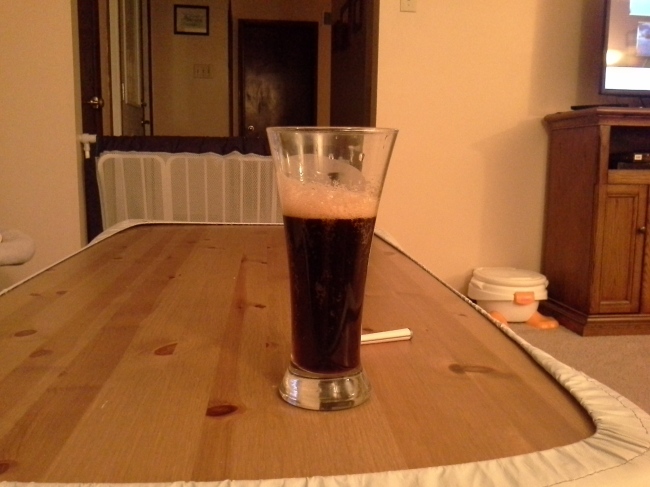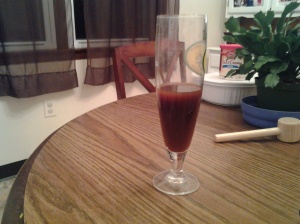It has been a while since I updated anyone on anything so here ya go.
The Drunken Emu Hard cider is gone. It turned out pretty good but I have other cider recipes I prefer far more and wouldn’t have lasted nearly as long. Oh well, that is part of the process.
The Dry-Hopped Cider is gone. Hallertau was an okay hop. I know how much I enjoy cascade hops but in the spirit of exploration, next time I will try centennial hops.
The Transfiguration IPA is nearly gone. I really enjoyed this brew. I like IPAs and I think IPAs are the easiest beer to brew in the gluten free style. The malt isn’t what matters; the hop is and in this beer man do the hops stand out and taste delicious!
The 1st Date Dunkel 2.0 is nearly gone as well. It is still a popular drink with “regular” beer drinkers. I will definitely make it again but I will most definitely not use oak chips again.
Palmerston’s Solution is starting to mature and tasting better every time I sample it. My only fear is I have given too much of it away. How is that for selfishness? As Paul said, “Oh wretched man that I am!”
Black Jack Pershing is bubbling away as happy as a clam. I forgot to sample this one so I have no idea what it tastes like! I’m rethinking my classification of this, I think it may be more along the lines of a graff. Whatever.
Finally, my Fall Harvest Mind Crusher is….forgotten. I need to work harder at being intentional with my meads. It is still in the jug. Lord willing and the creek don’t rise, I’ll bottle this when I bottle the Black Jack.
_________________________________________________________________________________________________________
Now on to my book shelf…
I am still working through D.A. Carson’s Call to Spiritual Reformation. I like it so much I’m thinking about starting over and taking better notes! I cannot recommend this one enough to someone who values prayer.
I am nearly finished with Andrew Murray’s Abide in Christ. It is an odd mixture of Arminianism and South African (Dutch) Reformed Calvinism but it has its merits.
I finished James S.A. Corey’s Abaddon’s Gate and it was awesome! I’m excited for the sequel which will be released in a few days.
I read Elizabeth Moon’s Trading in Danger in the hopes that I might have found something to satisfy the void that Lois McMaster’s Bujold’s Vorkosigan Saga left. While the book had its good points and I will definitely read the next one…the main protagonist is no Mile’s Vorkosigan. But then again…who is? <sigh>
I am about 1/3 of the way through The Presbyterian Conflict by Edwin Rian. I feel a bit like Dr. Zoidberg, “Fellas, fellas…why didn’t anybody tell me about this stuff?” The Auburn Affirmation really explains why the PC(USA) (and other mainline Reformed denominations) are where they are theologically. Oh well. Praying the Lord opens a door to a more, eh hem, Orthodox denomination.
I put aside Jame’s Jordan’s commentary on Judges. I didn’t do that because it was bad–it was excellent. But mainly because I have some pressing subjects (see the book immediately above) which I need to master ASAP.
I think that is it for updates.




